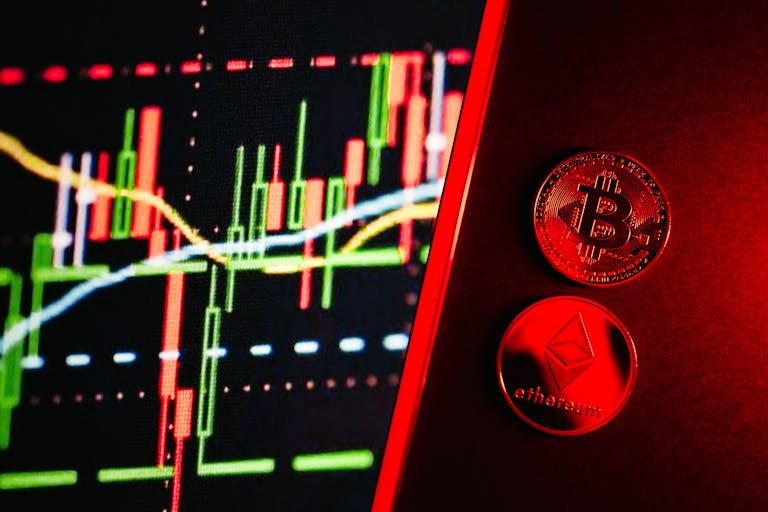Navigating Binance Crypto Trading: Strategies for Bull and Bear Markets
The cryptocurrency market is known for its extreme volatility, with periods of rapid price increases (bull markets) and sharp declines (bear markets) creating unique challenges and opportunities for traders. Binance, one of the largest and most popular cryptocurrency exchanges, offers a wide array of tools and features to help users adapt to these market conditions. Understanding how to leverage Binance’s platform during bull and bear phases can significantly impact a trader’s success. This article explores the characteristics of bull and bear markets, the strategies traders can employ on Binance, and how the platform supports both scenarios.
Understanding Bull and Bear Markets in Cryptocurrency
A bull market occurs when prices are rising, and investor confidence is high. This phase is often driven by positive news, increased adoption, and speculative demand. Conversely, a bear market is marked by falling prices, pessimism, and widespread selling. These cycles can last months or even years, and traders must adjust their approaches accordingly.
Cryptocurrency markets are particularly prone to these swings due to factors like regulatory changes, macroeconomic shifts, technological advancements, and speculative bubbles. Binance, with its diverse products and global user base, becomes a critical hub for navigating these dynamics.
Bull Market: Capitalizing on Momentum
During a bull market, prices trend upward, and traders often seek to maximize gains. Binance provides several tools to help users ride the wave.
1. Spot Trading for Short-Term Gains
Bull markets are ideal for spot trading, where users buy and hold assets or trade them for immediate profit. Binance’s user-friendly interface and high liquidity make it easy to execute trades quickly. Traders can capitalize on trending altcoins or major cryptocurrencies like Bitcoin (BTC) and Ethereum (ETH) by buying low and selling high.
Strategy Tip: Use limit orders to secure entry points during surges, and stop-limit orders to lock in profits as prices rise.
2. Leverage in Futures and Margin Trading
Binance’s futures and margin trading platforms allow traders to use leverage to amplify returns. In a bull market, traders can open long positions (betting on price increases) with borrowed funds. For example, a 10x leverage on a 10% price increase could yield 100% returns.
Strategy Tip: While leverage can boost gains, it also magnifies risks. Use risk management tools like stop-loss orders and avoid over-leveraging to mitigate potential losses if the market reverses.
3. Staking and Yield Farming
Bear markets often see traders holding assets for long-term value. However, during a bull run, staking and yield farming on Binance Smart Chain or other blockchains can generate passive income. Traders may also take advantage of Binance Earn programs, which offer rewards for depositing stablecoins or crypto assets.
Strategy Tip: Focus on projects with strong fundamentals and growth potential, and diversify staking portfolios to reduce risk.
4. Monitoring Market Sentiment
Binance’s Binance Research and market analysis tools (like real-time charts and sentiment indicators) help traders stay informed. Riding the momentum of positive news—such as institutional adoption or regulatory approvals—can be crucial during a bull phase.
Bear Market: Survival and Strategic Positioning
A bear market is a test of patience and strategy. Prices drop, and many investors panic. However, prudent traders use this time to build position or hedge their portfolios. Binance’s features can help mitigate risks and even turn the downturn into an opportunity.
1. Defensive Trading: Dollar-Cost Averaging (DCA)
During a bear market, DCA (buying a fixed amount of an asset at regular intervals) can reduce the impact of volatility. Binance’s Auto-Invest feature automates DCA, allowing users to accumulate assets gradually without timing the market.
Strategy Tip: Focus on high-quality, long-term projects (like Bitcoin or stablecoins) to avoid losing value in a prolonged downturn.
2. Short Selling and Hedging
Binance’s derivatives market (e.g., Perpetual Futures and Options) enables traders to short sell assets, profiting from price declines. For instance, if a trader believes a coin will drop, they can open a short position. Additionally, hedging strategies using stablecoins or inverse ETFs (available on Binance) can protect portfolios against broader market declines.
Strategy Tip: Use leverage cautiously in bear markets, as price drops can trigger liquidations quickly. Consider limit orders or stop-loss orders to safeguard capital.
3. Staking and Maintaining Liquidity
While bear markets are challenging, they can also be a time to secure staking rewards or interest income through Binance’s savings products. Traders may also convert assets into stablecoins (like BUSD or USDT) to preserve value during downturns.
Strategy Tip: Avoid overcommitting to volatile assets during bear markets. Prioritize low-risk, high-liquidity assets to maintain flexibility.
4. Learning and Planning
Bear markets are a time to analyze mistakes, review strategies, and study market trends. Binance Academy offers free educational resources to help users deepen their understanding of blockchain technology, technical analysis, and risk management.
Strategy Tip: Use this period to test new strategies with demo accounts or small investments before committing larger sums.
Key Binance Tools for Both Market Conditions
Binance provides a suite of tools tailored to both bull and bear markets:
-
- Binance Futures: Enable long/short positions and leverage trading.
-
- Binance Options: Allow hedging and speculative opportunities.
-
- Binance Earn: Offers staking, savings, and yield farming.
-
- Binance Smart Chain: Supports DeFi and blockchain innovation.
-
- Binance Research and Analytics: Provides market insights and reports.
-
- Mobile App and Web Platform: Real-time data and customizable dashboards.
Common Pitfalls and Best Practices
-
- Avoid FOMO (Fear of Missing Out): Don’t chase hype in bull markets; stick to your strategy.
-
- Don’t Panic-Sell: In bear markets, selling at the bottom can lock in losses. Consider buying the dip if fundamentals are strong.
-
- Diversify Your Portfolio: Spread investments across assets to reduce exposure to any single coin’s volatility.
-
- Stay Informed: Follow Binance’s Twitter, Discord, and news section to stay updated on market shifts.
Case Studies: Binance in Historical Market Cycles
-
- 2020-2021 Bull Run: Binance saw a surge in trading volume as users exploited bullish trends. Futures trading and staking opportunities became popular.
-
- 2022 Bear Market: Traders turned to stablecoins, staking, and long-term strategies. Binance’s educational resources and advanced tools helped users navigate the downturn.
Conclusion: Adapt, Learn, and Thrive
Whether the market is bullish or bearish, Binance equips users with the tools to adapt. In bull markets, focus on capitalizing on momentum and leveraging opportunities. In bear markets, prioritize risk management, hedging, and long-term value. The key to success lies in understanding market dynamics, using Binance’s features strategically, and maintaining discipline.
Final Note: Always conduct thorough research and consider your risk tolerance. Crypto trading is inherently volatile, and no strategy guarantees success. However, by leveraging Binance’s ecosystem and staying informed, traders can improve their chances of thriving in both cycles.
Disclaimer: This article is for informational purposes only and does not constitute financial advice. Always consult with a qualified professional before making investment decisions.







